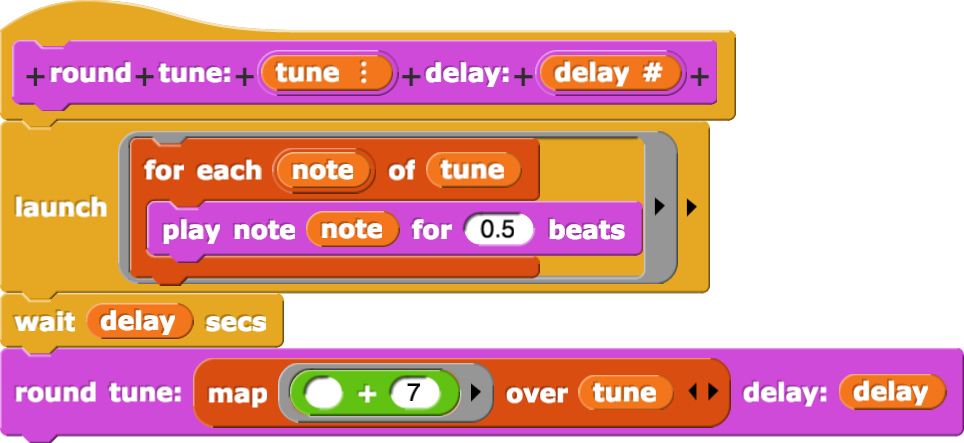- Try these:



Map Block & Music


play block; you have to erase the 60 you'll find there):![for each (item) of (twinkle twinkle little star) [play note ( ) for (0.5) beats]](/bjc-r/img/2-complexity/twinkle.png)
![for each (item) of (twinkle twinkle little star) [play note (item) for (0.5) beats]](/bjc-r/img/2-complexity/twinkle2.png)
for each block means the same thing as dragging the item variable into that slot.
transpose reporter that takes a list of note pitches and a shift number as input, and uses map to report a list with each note shifted up (or down if the shift number is negative) as many pitches as the input indicates. For example, this block will report the notes {65, 69, 72, 77, 65}: 
transpose by block with several different shift numbers.transpose by block to hear what it does to each of the two scales and the song. For example, try: ![for each (item) of (transpose (twinkle twinkle little star) by (7)) [play note ( ) for (0.5) beats]](/bjc-r/img/2-complexity/twinkle-transposed.png)


round block that will accomodate the pitch and length parameters of each note of the song.